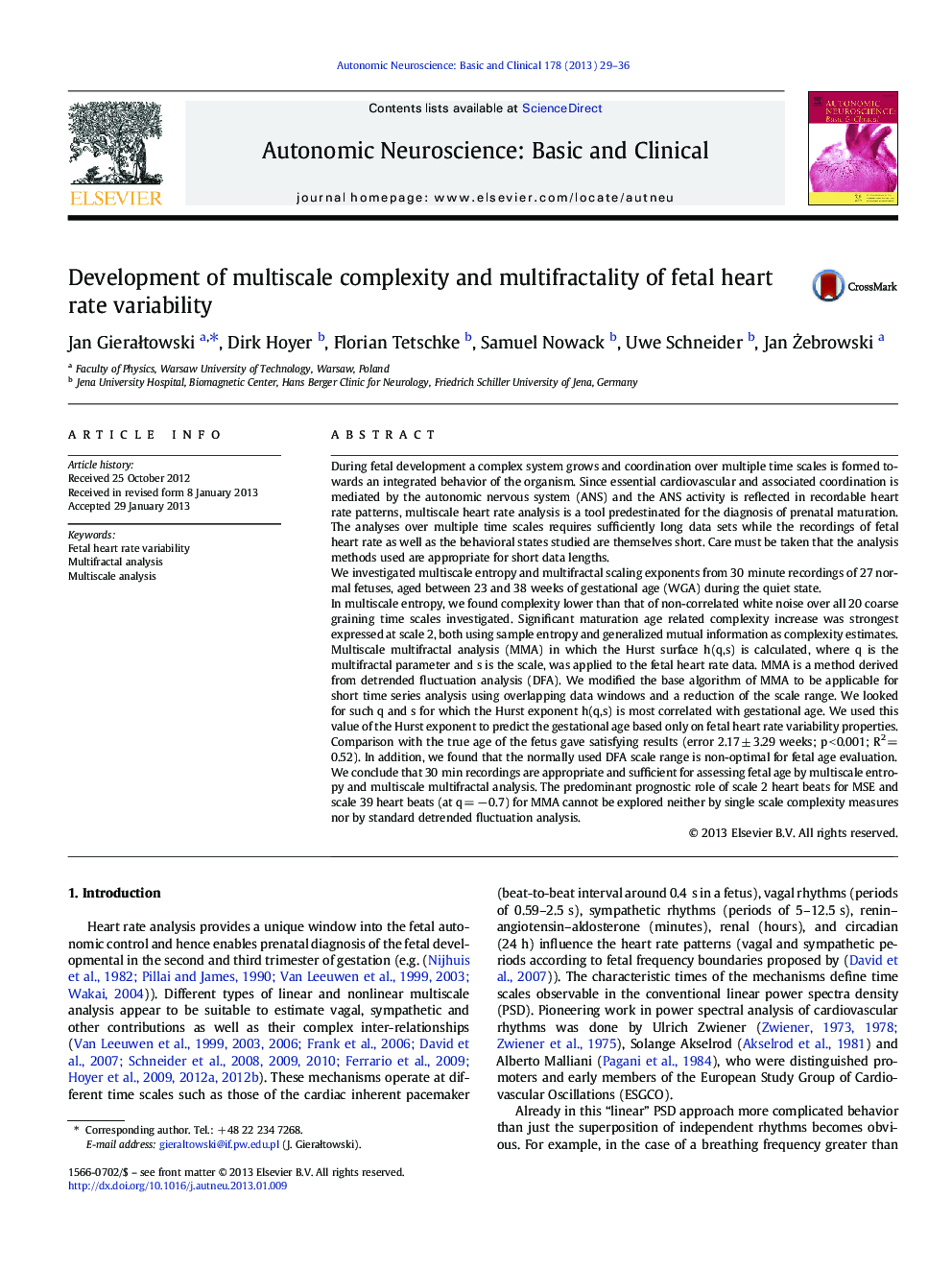| کد مقاله | کد نشریه | سال انتشار | مقاله انگلیسی | نسخه تمام متن |
|---|---|---|---|---|
| 6004164 | 1579537 | 2013 | 8 صفحه PDF | دانلود رایگان |
During fetal development a complex system grows and coordination over multiple time scales is formed towards an integrated behavior of the organism. Since essential cardiovascular and associated coordination is mediated by the autonomic nervous system (ANS) and the ANS activity is reflected in recordable heart rate patterns, multiscale heart rate analysis is a tool predestinated for the diagnosis of prenatal maturation. The analyses over multiple time scales requires sufficiently long data sets while the recordings of fetal heart rate as well as the behavioral states studied are themselves short. Care must be taken that the analysis methods used are appropriate for short data lengths.We investigated multiscale entropy and multifractal scaling exponents from 30 minute recordings of 27 normal fetuses, aged between 23 and 38 weeks of gestational age (WGA) during the quiet state.In multiscale entropy, we found complexity lower than that of non-correlated white noise over all 20 coarse graining time scales investigated. Significant maturation age related complexity increase was strongest expressed at scale 2, both using sample entropy and generalized mutual information as complexity estimates.Multiscale multifractal analysis (MMA) in which the Hurst surface h(q,s) is calculated, where q is the multifractal parameter and s is the scale, was applied to the fetal heart rate data. MMA is a method derived from detrended fluctuation analysis (DFA). We modified the base algorithm of MMA to be applicable for short time series analysis using overlapping data windows and a reduction of the scale range. We looked for such q and s for which the Hurst exponent h(q,s) is most correlated with gestational age. We used this value of the Hurst exponent to predict the gestational age based only on fetal heart rate variability properties. Comparison with the true age of the fetus gave satisfying results (error 2.17 ± 3.29 weeks; p < 0.001; R2 = 0.52). In addition, we found that the normally used DFA scale range is non-optimal for fetal age evaluation.We conclude that 30 min recordings are appropriate and sufficient for assessing fetal age by multiscale entropy and multiscale multifractal analysis. The predominant prognostic role of scale 2 heart beats for MSE and scale 39 heart beats (at q = â 0.7) for MMA cannot be explored neither by single scale complexity measures nor by standard detrended fluctuation analysis.
Journal: Autonomic Neuroscience - Volume 178, Issues 1â2, November 2013, Pages 29-36
